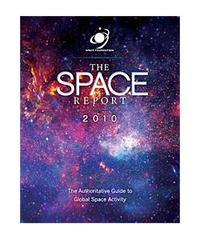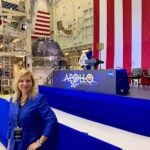Spotlight
From Earth, to Space, and Back
Written by: developer
 One of the ways in which space programs benefit society is by taking something from Earth, studying it in space, and returning it to Earth later. It could be data, hardware, or something considerably less mechanical, such as human beings or bacteria. With a carefully designed experiment, researchers can gain valuable insights that enable them to improve our daily lives.
One of the ways in which space programs benefit society is by taking something from Earth, studying it in space, and returning it to Earth later. It could be data, hardware, or something considerably less mechanical, such as human beings or bacteria. With a carefully designed experiment, researchers can gain valuable insights that enable them to improve our daily lives.
Research conducted to support astronauts living and working in space may lead to medical treatments to stop bone loss in cancer treatment patients. Microgravity is well known to cause bone loss in astronauts, but recent research shows that elevated radiation levels typical in the space environment also contribute to this effect. Researchers with the National Space Biomedical Research Institute, a non-profit organization working with NASA, aim to find ways to reduce bone loss at the radiation levels astronauts experience during long missions in outer space. The findings are being used to understand why cancer patients, who experience comparable radiation levels during cancer treatments, lose bone mass rapidly. The research is currently focused on understanding the cellular mechanisms that cause bone loss from radiation exposure. Future research may look at mitigation and medical countermeasures.
The space environment can also be useful for developing medical vaccines. Aboard the Space Shuttle, NASA astronauts conducted research on the effects of spaceflight on salmonella cells. The weightless environment of spaceflight causes the salmonella cells to function as though they are crossing from the intestine into the bloodstream to start an infection. This research is contributing to the development of potential vaccines and therapeutics to fight salmonella.
Biotechnology breakthroughs are occurring as engineers find inspiration from the lotus plant to develop materials that can overcome the challenging space environment. Studies of lotus plants and their ability to shed water and dirt are inspiring a NASA team to develop a similar capability for use on spacesuits, scientific instruments, robotic rovers and other devices used for exploring the solar system. The lotus plant skin contains innumerable tiny spikes that greatly reduce the area on which water and dirt can attach. Materials similar to the lotus plant skin could prevent dirt and bacteria from sticking to and contaminating exploration equipment. The NASA team is examining modified coatings for possible use on spacecraft solar panels and thermal radiators. The coating could also be used for non-space applications such as windshields, camera lenses and eyeglasses.
This – and much more – information about the ways space technology improves our lives can be found in The Space Report 2010: The Authoritative Guide to Global Space Activity. To order a copy in book, PDF, or CD-ROM format, go to www.TheSpaceReport.org.
For additional information on the tangible benefits of space, read about the Space Foundation’s Space Certification program and the Space Technology Hall of Fame®.
This article is part of Space Watch: October 2010 (Volume: 9, Issue: 10).


